Andrew McCutchen Video: Do This For Longer Drives
In This Andrew McCutchen Video (1 of 4),
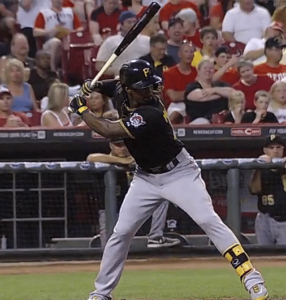 …We’re going to look at how ‘Cutch’ (5’10” 190 lbs*) used Science to beat Paul Goldschmidt (6’3″, 245 lbs*) for the 2013 NL MVP. McCutchen has to stay close to human movement science in order to compete with big guys like Goldschmidt.
…We’re going to look at how ‘Cutch’ (5’10” 190 lbs*) used Science to beat Paul Goldschmidt (6’3″, 245 lbs*) for the 2013 NL MVP. McCutchen has to stay close to human movement science in order to compete with big guys like Goldschmidt.
(*according to Baseball-Reference.com)
In this Part-1 video, we’ll:
- Demo the Un-Weighting Principal,
- See how Cutch either DOES or DOESN’T use this in his swing, and
- Look at how to work on this at home.
For a different angle on this, CLICK HERE to watch the – 1 min, 58 second – PBS Circus Physics video about the Conservation of Linear Momentum (aka, the Un-Weighting Principal).
A few notable explosive rotational athletes who also use this human movement rule:
- Olympic throwers (javelin, hammer, and discus)
- Olympic shot putters
- Olympic jumpers (high, long, and triple)
WHY the Wide Stance?
I get tired of hearing about instructors pushing the wider [non-athletic] stance. This makes it difficult to create any forward movement in the swing, and see it’s benefits (read below).
I ask my students…what position – with your feet – would you want to cover a fast wide receiver? How about guarding an agile soccer striker? Or jumping to slam dunk a basketball? Hitters need to start from an athletic stance – feet slightly wider than shoulder width.
“Sitting back” isn’t very effective when it comes to dynamic human movements.
As a famous Samurai swordsman Miyamoto Musashi once said:
“In all forms of strategy, it is necessary to maintain the combat stance in everyday life and to make your everyday stance your combat stance.” – Musashi, The Water Book
Un-Weighting Principal Benefits:
- Feel lighter in Final Turn
- Easier to move heavy objects
- Get a ‘head start’
How Does Andrew McCutchen Do This?
- Front hip moves forward
- Head movement is okay to heel strike
- NO push, natural fall forward
How-To Practice at Home (feedback marker setup)
- Back marker (dimple ball or duct tape) inside back foot
- Front marker is hitter’s bat length, plus one or two baseballs in front
- Get “front hip” to front marker
- Set tee slightly behind front marker
CLICK HERE to watch Part-2, Andrew McCutchen: Do This For Longer Drives. We’ll look at how effective Cutch’s Final Turn is…or isn’t.
- Fix Late Swings Fast: 2025 Pitch Recognition & See-Decide-Swing Training for Youth Baseball Power Hitters - October 6, 2025
- Safe Youth Weighted Bat Training: Proven Overload/Underload Drills to Increase Exit Velocity in Games Starting Tonight - September 29, 2025
- AI Coaching Course 2025: Youth Baseball & Softball Practice Plan + Off-Season & In-Season Workout Builder Fast - September 23, 2025


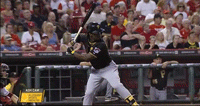
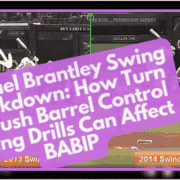

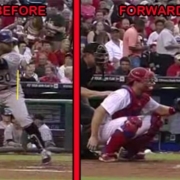



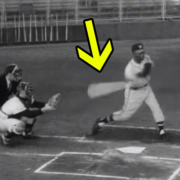
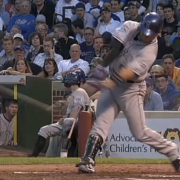



I’m always confused where the tee should be placed. Is it this far forward to encourage the forward body move? With it where you suggest is there a danger of the kid wanting to push his hands ahead to reach the pitch?
Is this the typical tee positioning that you use? I guess using the forward move, the ball ends up a little deeper?
JD, yes this is the tee configuration I use. It encourages the hitter to make an aggressive ‘move’ to the ball. And setting the tee behind the front ball marker keeps the hitter from continuing forward past front heel strike. When I teach the Un-Weighting Principal I don’t focus on the hands so much. I get the hitter to ‘think’ about their feet and hip movement. We worry about what the hands and arms are doing later in the progression.